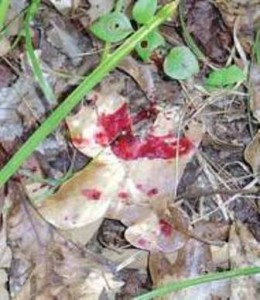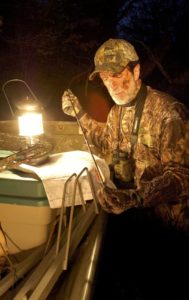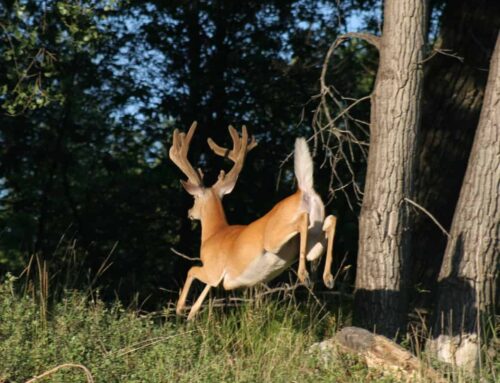 Once you fire an arrow and draw a deer’s blood, it is your ethical duty to work until you find him. It might take you five minutes or five hours, but heed this advice most of the time the trail will end, happily, at your doe or buck.
Once you fire an arrow and draw a deer’s blood, it is your ethical duty to work until you find him. It might take you five minutes or five hours, but heed this advice most of the time the trail will end, happily, at your doe or buck.
1. See Buck Run
After the thwack of the arrow, watch the deer run as far as you can see it. In thick woods, look for flashes of white as it darts through the trees. In open country, follow a buck as long as you can with your binoculars. At the spot where you lose the buck, pick a marker—big tree, rock, fence post, etc. Climb down from your stand, walk straight to the marker and flag it before you forget it. This will be your starting point.
2. Listen Up
Watch and listen. If you lose sight of the deer, cracking sticks, clattering rocks or sloshing water can tell you the general line the animal fled. Listen for heavy buck to crash down, that’s music to your ears man! From your stand, take a compass reading to the last sound you heard. If the tracking gets difficult, go back to your stand with your compass and re-gain a line to him.
3. Where Did You Hit?
At the point of impact, examine the blood and cut hair on the ground. Look for your arrow. Determine as best you can where you hit the deer. Walk out to the marker where you last saw the buck and pick up the trail. Walk along the trail out to your marker—you might find your arrow or part of it—but don’t waste too much time between the impact spot and your marker, you know the buck is farther away than that.
4. Take It Easy
Move slowly and quietly off to the side of a blood trail, almost like you’re stalking. You never want to jump a wounded deer because it can run a long way on adrenaline. A buck might cut hard left or right and then back again, making the trail doubly tough to pick up again. If his blood clots, you might lose the trail altogether.
5. Check Low and High
In addition to looking for blood on the ground, check high on brush, weeds and trees. A lot of times you’ll find streaks or specks of blood from an arrow’s exit hole on stuff two feet off the ground.
6. Tape the Trail
Beginning at point of impact, mark a blood trail with orange tape at 10- to 20-yard intervals. Turn back and study the flags, and it will give you a line on the general direction the buck is taking. Keep projecting that line out front as you look for more blood.
7. Where Would He Go?
Try to predict where a wounded buck might be headed–maybe to a river, a low creek crossing or a big thicket up ahead. Check brush piles along a blood trail. A buck might crawl into a patch of cover and die. Mark last blood and veer over to check those thickets and terrains for more spoor.
8. Read the Tracks
When a buck’s running tracks slow to a walk (the stride gets shorter and drops of blood fall straight to the ground) stop and back out of the area. Chances are the deer is looking for a spot to lie down. Give it a few hours, come back and you’ll likely find your animal a short ways ahead.
9. Don’t Spook Other Deer
One morning Montana longbow hunter Eliot Strommen and I trailed an 8-pointer I had just shot on the Milk River. “Wait,” he whispered, “let those does move on.” Six animals that had been with the buck I shot had gathered and were milling in the head of a small wood 120 yards away. “If they spook and run, your buck might get up and try to run with them, and we might lose the trail,” Eliot said. That was fantastic advice that I had never considered, but now do all the time. We knelt and waited, the does drifted off and we found my buck 80 yards ahead.
10. When the Blood Stops
If you lose a trail, get down on your hands and knees and look for upturned leaves or stumbling tracks. Many times I have followed leaves and tracks for 50 yards or so, and then found where a deer started bleeding again.
11. Grid It Out
One time I looked for a 10-pointer for hours. I went home and called a couple of buddies, and we went back to that 100-acre block of woods. We spread out 75 yards and did a grid for another two hours. I was feeling low when Jon yelled, “Here he is!” The buck had pulled a giant fishhook, turned back, crawled under a deadfall and died about 120 yards from the stand where I shot him. When all else fails, grid it out for hours, and stay as positive as you can.






